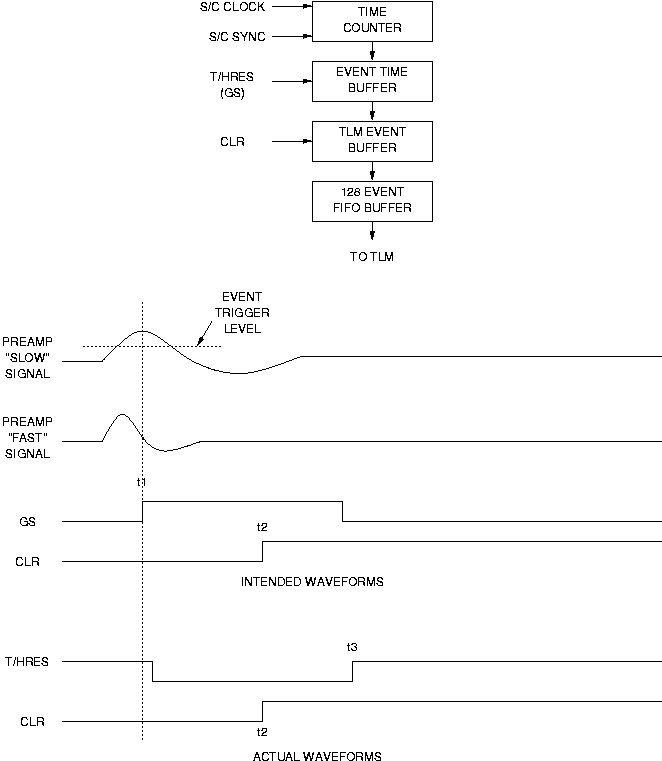HRC Event Time Tag Investigation
The following is taken from a report on an investigation of the HRC
event time-tagging error by Jack Gomes.
1. Summary
We found that an incorrect signal on the HRC motherboard was connected
to the time tag circuit, the effect of which is to cause each
telemetered event to have a time tag which is associated with the
previous event, whether that previous event was telemetered or
not.
2. Details
As shown in the diagram below, the HRC starts processing each event
that exceeds the amplitude of the event trigger level at time t1.
Time t1 is derived from the zero crossing of the "FAST" signal,
which occurs at a fixed time (~2us) after the onset of the event
waveform. A signal called "GS", which is used to initiate many
event processing functions, begins at this time. One of the
functions of "GS" was to latch the content of the Time Counter
into the Event Time Buffer. At time t2 (10us after the onset of
"GS"), a signal called "CLR" transfers the Event Time Buffer
contents to the TLM Event Buffer for events that meet the criteria
to be telemetered.
We found that a signal called T/HRES was connected to the Event Time
Buffer instead of "GS". T/HRES is an inverted version of "GS",
delayed by 0 to 1us. Since the time buffers transfer their data
on the positive-going edge of their clock waveforms, this error
delays the clocking of the Event Time Buffer until t3, which is
after the Tlm Event Buffer transfer time, thus the time tag
telemetered with each event actually belongs to the previous
event. It is important to note that that previous event may or
may not be telemetered. Events which are not telemetered are those
excluded by the "validity" criteria (upper level discriminator,
center blank, etc.) or those that are excluded because the event
fifo is full, or the event processor is busy.

Mike Juda
Last modified: Mon Mar 26 09:28:25 EST 2001

